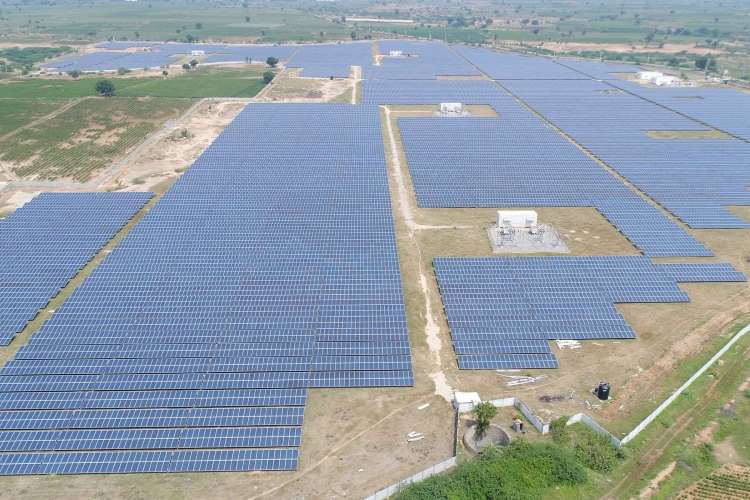
Rapid transition to renewable energy is critical for India to meet its rising energy demand as well as its international commitments to avert climate change. At the 26th Conference of Parties (COP26) at Glasgow, India had committed to an ambitious goal of achieving 500 GW of renewable energy by 2030, higher than the target of 450 GW pledged in the Paris Agreement. The country looks to achieve 420 GW of RE from solar and wind alone.
The solar and wind energy projects require larger land areas, typically three to 12 times that of fossil fuel-based energy generation. Without careful planning, land-intensive RE projects could impact local communities, food security and biodiversity, and even cause greenhouse gas emissions that reduce their climate benefits. Such conflicts could jeopardise investments and affect RE expansion. Thus, there are concerns over the expanded RE target because it may further fuel the rise in conflicts if projects are not sited responsibly.
READ I Climate endgame: Governments must prepare for worst-case scenarios
Land use pattern for solar projects
Despite the scale of renewable energy development that India is planning, there has been no assessment of how current development has impacted land use. To address this need, The Nature Conservancy (TNC) in collaboration with Microsoft conducted a retrospective analysis of land use pattern by existing solar projects across India.
The analysis using advanced remote sensing and AI technology found that over 85% of solar projects were built on land cover types that could create potential biodiversity and food security conflicts — 67.6% of agricultural land and 18.7% of natural habitat. Of this, 38.6% of agricultural land may have had the potential to cultivate seasonal crops including kharif, rabi and zaid and 28.95% of the land with plantation crop/orchards. The natural land cover types included sensitive ecosystems such as evergreen, deciduous, littoral swamp forest, and scrubland with potential biodiversity value.

The study found that 800 km2 of agricultural land followed by 280 km2 of natural land were used to deploy 45 GW of solar energy across India. Whereas only a small portion of degraded wastelands and converted land (189 km2) were used to deploy 4.3 GW of solar energy. These findings from the study highlight that most of the solar energy development across India is at agricultural land. If the same land use trend for solar energy development continues, 300 GW of solar energy target by 2030 may further divert thousands of square kilometres of India’s agricultural land and natural ecosystems for solar energy development.
READ I Cheap electricity central to India’s clean cooking transition
Jeopardizing communities, biodiversity
The huge land footprint required to achieve the ambitious RE goal set by India is causing concerns over the environmental and socio-ecological risks of large-scale solar and wind energy projects. most state regulatory agencies in India consider wind and solar projects as ‘green’, given the emission reduction benefits. As a result, projects do not need an Environmental Impact Assessment (EIA) regardless of their size or location. But the ministry of environment, forest, and climate change (MoEFCC) has advocated that areas being considered for such projects should not involve wetlands, agricultural land, ecologically sensitive areas, or areas with rich biodiversity.
Yet, many large-scale solar energy projects are being deployed on either natural ecosystems with high biodiversity value or land socioeconomically and culturally important for local communities, leading to conflicts. In India, there are at least 15 reported cases of conflicts related to solar and wind energy projects since 2017. Such conflicts continue to rise in recent times affecting the livelihoods of thousands of people and billions of dollars in investment for RE developers.

For example, 600 km2 and 950 km2 of open land classified as wasteland by the government are identified for industrial-scale solar park development in Kutch, Gujarat, and the Jaisalmer region of Rajasthan respectively. However, scientists and conservationists have raised concerns that these open lands are biodiversity-rich ecosystems, and diverting these lands for RE development threaten critically endangered wildlife such as the Great Indian Bustard (GIB) and the livelihood of local pastoral and farming communities.
Opposition from the local communities to RE is also growing. In 2010, over 5000 acres of common land was acquired for a solar park in Charanka village, Gujarat, but was opposed by the local Maldhari community. The community members grazed their buffalos, cows, and goats on this open land. The associated loss of livelihood for this local community has led to a lot of negative publicity for the solar project including protests and petitions filed in courts.
Similarly, the solar energy project in Orans of Jaisalmer, Rajasthan was fiercely opposed by conservationists and the local community. In 2018, 122 of the 150 GIBs in the country were in Jaisalmer. The large power lines built for the transmission of solar and wind energy projects in the Jaisalmer region threaten the survival of GIBs.
With the rising number of GIB deaths due to power lines, in 2021 the apex court ordered power firms in Rajasthan to lay underground wiring for all power projects and install bird diverters on existing lines. However, the Ministry of New and Renewable Energy (MNRE) filed an application to overturn the ruling, alleging that underground transmission makes RE projects financially unviable for developers, increasing project costs by four to twenty times. Therefore, any RE project planned without considering socio-ecological and environmental risk end up in land conflicts, increasing project cost, risking investment, and delaying RE goals.
Degraded land for renewable energy
Yet there is hope as India has vast amounts of degraded and converted land parcels spread across the country with the potential capacity to generate 1789 GW of solar and wind energy, which is four times the 2030 goals. In addition, rooftop spaces in built areas, areas of artificial water bodies (canal-tops, reservoirs), and spaces on national and state highways have a high potential for solar energy generation (550 GW) that can significantly reduce the land requirement for RE expansion. Yet these lands remain largely underutilized. Utilizing these for the deployment of RE will have less socioecological and environmental impacts compared to land with immense ecological, agriculture, livelihood, and biodiversity value.
Our recent study suggests developing renewable energy on these low-conflict lands is not happening and will not happen by accident. The policy and decision-makers must ensure that the land parcels identified for such projects do not threaten the livelihoods, land rights of communities and biodiversity, and natural ecosystems.
Site responsibly with SiteRight tool
A step towards this vision should include an initial screening of land parcels identified for solar and wind energy projects for socioecological and environmental risk. Such screening should be undertaken before any project development or tenders are considered for a land parcel. To aid this, the land use decision support tool called “SiteRight” helps in the initial screening of identified solar and wind energy land parcels for their environmental and social risk. It also helps developers identify land parcels with low socioecological and environmental risk based on their required installation capacity for solar and wind energy development.
Hopefully, decision-makers, investors, developers, and other stakeholders in the renewable energy sector make use of “SiteRight” tool to guide the present and future development of solar and wind energy in India. It is high time that RE projects are sited responsibly avoiding conflicts and ensuring justice for communities and the environment.
(This article was first published in TNC India where the author is Senior Applied Scientist.)

